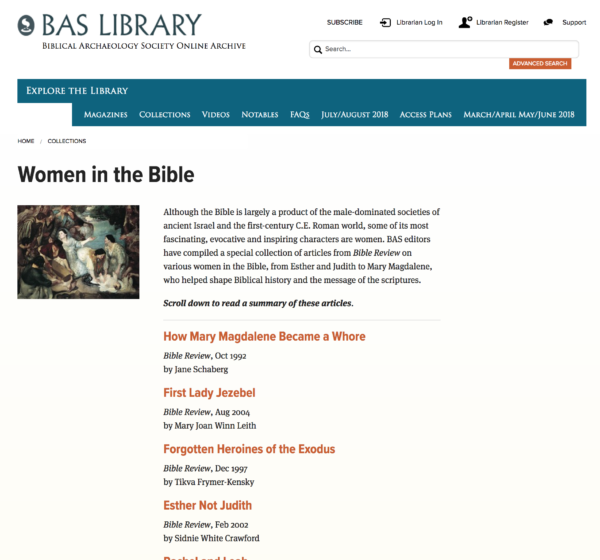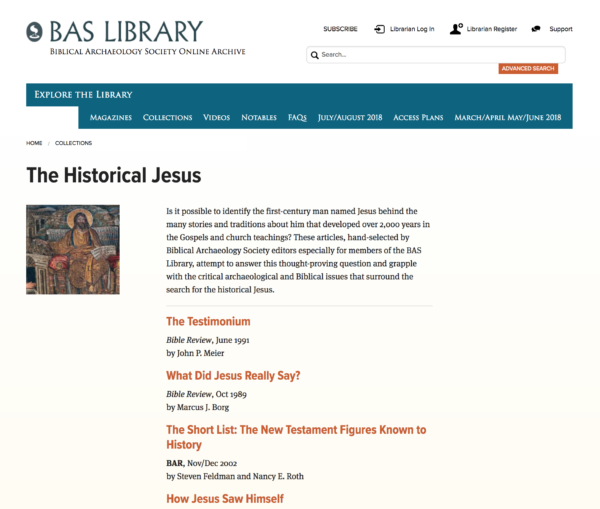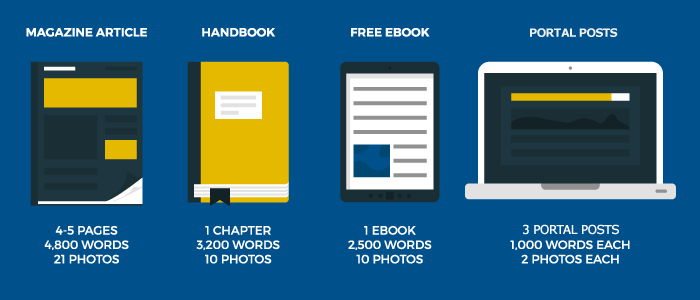Decades of experience yield guaranteed profits for smart publishers
Succeeding in the digital age of magazine publishing can seem daunting … but it doesn’t have to be.
For publishers seeking answers to a thousand questions, Mequoda has the answers, and we’re revealing them at our Digital Magazine Publishing Workshop on August 2, 2016. That’s thanks to having spent literally decades promoting magazines to the reading public – first in print and now including all the many variables that modern publishing requires.
As we’ve explained before, publishers won’t maximize profits unless they deliver five different editions of each magazine in their portfolio: Print, digital editions on the Apple, Amazon and Google platforms, and the revolutionary new web edition that’s platform-neutral.
The problem many publishers have with this idea is that pricing and marketing so many different editions seem chaotic at first glance. But it’s not as challenging as it seems.
Consumers make it easy: Our research and testing on dozens of brands proves that readers don’t want to choose one platform – they want it all. The only question remaining is how you get them to actually hand over the money for “all.” And that’s where our combined experience with direct mail campaigns from the old print days and electronic promotions in the digital age comes into play.
How to price five different editions?
There are three schools of thought on pricing modern magazines. The traditional model involves discreet pricing of all their different editions. (We fear this is largely because said publishers don’t have the technology on their website to do anything else.) It usually looks something like this:
- $19.97 – Digital magazine
- $24.97 – Print magazine
- $29.97 – Website
But this isn’t well-suited for multiplatform publishers, because consumers won’t perceive any extra value for the $24.97 or $29.97 prices. The only reason to choose anything but the lowest price is if the he or she is one of the vanishing breed who prefers print, or would rather consume content sitting at a desk.
Then there’s universal pricing, in which the subscriber gets access to your content on all your platforms for one price. This allows subscribers who buy your tablet edition to have access to your entire website, which allows you to build a long-term relationship, increase brand loyalty and sell your other products. From the publisher’s point of view, a subscriber is a terrible thing to waste, and anyone who subscribes to content on any platform, in any edition, is given premium access to his products.
The drawback to universal pricing is that the publisher is leaving money on the table by essentially giving away two additional products for the price of one.
That brings us to the method we’ve perfected to the tune of thousands of dollars in additional revenues (that our Gold Member clients thank us for). This is contrast pricing, which takes advantage of the natural human inclination to make choices based on the relative value of things compared and contrasted to other similar things. It also plays to that desire our consumers express to have it all, making it simple for your customers to get it by choosing the all-in-one option, thus generating more orders, higher customer satisfaction and increased revenues.
The contrast pricing theory has been beautifully illustrated in depth by Dan Ariely, Professor of Psychology and Behavioral Economics at Duke University, in his New York Times bestseller, Predictably Irrational: The Hidden Forces That Shape Our Decisions.
If you want to learn how to use contrast pricing to sell more digital subscription products, attend our Digital Magazine Publishing Workshop on August 2.
Offers, offers, offers
It’s true: Finding the offer that will make you the most money was tricky even in the olden days when print was the only choice. Now you’ve got to calculate that offer for five different editions (hopefully priced for contrast in bundles!). Do you give subscribers something for free as an enticement to subscribe? Do you give them a trial subscription? Introductory price?
Believe it or now, this decision has actually gotten easier in the Internet era. We invented what we call the Offer Continuum, and in ancient times, that included 12 types of offers. Today, because we don’t do things such as “cash only” or sweepstakes offers, we’ve boiled it down to six.
Through literally decades of testing, we’ve also determined the success rate of each type of offer, which we call the response index. The most successful offer is indexed at 100, and less successful offer types will only get a certain percentage of that.
The least successful offer is a hard offer, in which they pay with their credit card up front, and get nothing else — no trial, no premium. This offer delivers only 25% response compared to the #1 offer, and before the Internet and email, this could still be a good strategy because it saved publishers a ton of money in mailing bills and conversion series efforts. Now, of course, that advantage has disappeared, so we don’t see much of this around anymore.
Of course, magazine subscription marketing must include long-term calculations such as how many renewals you get from subscribers who came in on the softest offer vs. the hardest offer. That means years of testing your offers to determine which ones work for your audience and your bottom line, but this continuum is the place to start.
If you want to learn which offers work best, attend our Digital Magazine Publishing Workshop on August 2.
Now about those incentives …
When using offers that included premiums, publishers used to give away everything from key rings to coffee mugs – or even (surprise!) content. Nowadays, publishers give away sample issues in their digital app to entice customers to buy something. Self offers an actual archive issue; Consumer Reports offers what looks like an old issue, but could be an issue compiled specifically for the purpose. A case study noted that for Popular Science, when they tested a specifically designed sample issue against a free trial, the sample issue, showing off the best of the digital edition, easily bested the free trial offer.
(Don’t hesitate to run your own similar test, though. Free trials are classic marketing techniques for a reason!)
There are plenty of other options, including access to, say, your digitized library. Mequoda’s clients and other publishers we study closely provide an array of incentive ideas. An effective technique in digital content marketing is “self-liquidating premiums”—having the value of premiums exceed the entire purchase price of your product.
Another incentive – or is it price? – concept to consider is introductory pricing, with two different prices for new subscribers and renewals, and step-up pricing, a strategy that has three prices: One for new subscribers, a slightly higher one for renewals, and an even higher price for those who have already renewed once.
If you want to learn which incentives generate the most subscriptions, attend our Digital Magazine Publishing Workshop on August 2.
And now, to put it all together …
If all of the above sounds confusing, have no fear. Mequoda has already organized, tested and documented exactly the right prices, offers and incentives for today’s digital publishers. And we teach it all to ambitious publishers, in just one day. This year we’re teaching our Digital Magazine Publishing Workshop on Tuesday, Aug. 2 in Boston, when my executive team and I will share all our strategies with you.
Because we teach it all in a single day, there’s no need for long hotel stays and no wasted time. Reservations for this one-day workshop that will change your business forever are now being taken on a first-come, first-served basis.
Here’s what you’ll learn at the Digital Magazine Publishing Workshop:
What American Magazine Readers Really Want to Buy
As the author of the nation’s largest multi-year magazine study, The Mequoda 2016 Magazine Media Study, we’ll show you that consumers still value print products, and for which types of magazines they specifically prefer it. You’ll hear about the attributes of app-based magazines that appeal to consumers. You’ll also learn that consumers are divided on which platform is valuable to them – underscoring the need for triple platform publishing. You even hear about trends in spending for both print and digital editions.
This data will drive your decision-making going forward and provide a foundation for every publisher at this event to understand how Americans view magazine media and their consumption preferences. You’ll use our study’s results in designing products consumers will buy, read and renew.
And if you have any questions about this data, the author of the study will be on hand to answer them, interpret the data in the context of their experience working with hundreds of magazine publishers, and help you understand what it all means and what you should do about it.
The Five Magazine Editions You Can and Should Create
Here’s where you drill down into these editions discussed above and how to generate all of them without adding dozens of new staffers. We’ll discuss the attributes of each of these five editions in depth, what makes each one special and, of course, best practices for creating, delivering and marketing them.
The Prices, Offers, and Incentives You Must Test Now
Pricing and marketing all these new and unfamiliar editions might seem a long way outside your comfort zone, but Mequoda can make it seem like child’s play.
You’re about to discover the keys to the pricing revolution! Our research and testing on dozens of brands proves that readers don’t want to choose one platform – they want it all. And with our tried and true contrast pricing strategy, you can make it simple for your customers to get it by choosing the all-in-one option, generating more orders, higher customer satisfaction and increased revenues.
We’ll also walk you through a 13-week test program built on the same strategies we’ve used to build direct mail campaigns for decades. By the end of this session, you’ll understand all the variables and offer construction that still work in the digital age: hard and soft offers, introductory pricing, auto renewal, payment gateways. You’ll also learn the best practices that are required in a world where credit card continuous service is becoming the norm.
How to Run an Integrated Multiplatform Marketing Campaign
Yes, we’re a long way from the old direct marketing days. But that doesn’t mean a marketing campaign has to be complicated. First, using the offers we just discussed, we’ll discuss the radical differences between that old-fashioned direct mail marketing and the new email marketing, which allows us to promote a magazine 52 times a year instead of just two, four or six times.
We’ll discuss how magazine cover story selection can drive sales in these campaigns, and explore incentives, premiums, special issues and free reports – how all of these are used to drive orders in the digital age. And all of this comes with a very disciplined campaign framework based on a 13-week cycle so that marketing is literally managed with Six Sigma discipline. This approach allows you to run 52 campaigns efficiently, fights fatigue and maximizes overall circulation, revenues and retention rates.
How to Upsell Print-Only Subscribers into More Expensive Digital Packages
The single biggest revenue opportunity available to publishers switching from print-only to a multi-edition magazine system for print, tablet and web editions lies in upselling your legacy subscribers into a multi-edition (or as we call it at Mequoda, multiplatform) package.
Based on the fundamental renewal principles that our executive team has used for decades, we’ve created an 18-effort postal and email renewal program in which we use offer, price, platform and incentives to maximize the number of customers that will choose to upgrade from being print-only postal renewals to multiplatform, continuous-service customers who now enjoy unlimited access to your premium content on all five platforms – and renewal mailing costs become obsolete.
You’ll get the same renewal program, upgraded for the digital era, that we introduced at TIME in 1995, and used at Computerworld, Modern Drummer, PC World, Consumer Reports and all of our highly successful niche publishing clients. You’ll learn exactly how to implement it and how to work smoothly with the leading fulfillment companies.
A Step-by-Step Roadmap for Making the Digital Transition
We know we’re proposing a significant change in the way you create, distribute and market your magazines. We know it sounds daunting – and we don’t recommend that publishers cherry-pick our strategies, or try to execute the Mequoda Method without the training we deliver in this workshop. So we’ll take all of the strategies you learned earlier and lay out a project timeline in which we identify all the milestones necessary for your transformation journey.
You’ll follow along through all the steps necessary for changing your production flow, and we’ll discuss how new bonus content like extra articles, videos and slideshows can be incorporated into your digital offerings.
We’ll also walk you through the process of becoming partners with Apple, Amazon and Google, how to select the right software, and how to troubleshoot the approval process.
You’ll even get a timeline for building a magazine website featuring all the features and functionality required for your profitable new system, accessible on all screen sizes and read in linear fashion. Everything from generating new issue announcements to promoting individual articles is included in this master schedule for your entire production, distribution and marketing programs.
12 Case Studies of Publishers Like You Who Have Blazed the Trail to Success
At end of the day, all of this theory is great – but we don’t stop there. You take home a list of 12 mentors you can follow as they execute this revolutionary publishing system every day, from Countryside to The Economist, from Loss Prevention to The Dark Report.
We’ll discuss the product offerings for both B2B and B2C publishers on our mentor list, studying their platforms via a multiplatform brand wheel, and discuss content strategy, audience development channels, pricing and revenue strategies.
All of our case studies will be live, cutting-edge mentors that you can follow after the program to use as a benchmark set for setting your own policies and for developing test ideas – so you won’t be left behind as the new magazine world continues to develop.
This is also a great opportunity for burning questions and drilling down into the way our examples apply to you.
You know that the magazine industry is evolving at an explosive rate, and that traditional publishers must keep up to thrive, or even survive. At the Digital Magazine Publishing Workshop on August 2, 2016, you’ll learn the strategies that hundreds of publishers already know, and that thousands more will be embracing in the years to come.
I urge you to register now, before all seats are filled. As much as we’d like to offer this workshop to more publishers, we just don’t have the time as we always put the needs of our 20+ Gold Member Organizations first – clients who have learned the Mequoda Method and value our help in implementing it for them.
The post The Prices, Offers, and Incentives You Must Test Now appeared first on Mequoda Daily.
![The Subscription Website Publishing Handbook]() Discover how to build a profitable subscription website when you download our FREE Subscription Website Publishing handbook today.
Discover how to build a profitable subscription website when you download our FREE Subscription Website Publishing handbook today.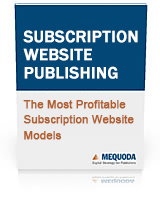

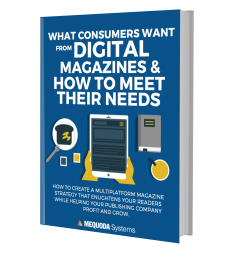

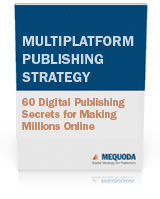


 The Biblical Archaeology Society, a Mequoda Master and Rocket Award Winner, is a prestigious organization and magazine brand (Biblical Archaeology Review) that, like most niche magazines, decided to go through the Mequoda transformation after seeing traditional direct mail and newsstand sources decline in sales during the past 5 to 10 years.
The Biblical Archaeology Society, a Mequoda Master and Rocket Award Winner, is a prestigious organization and magazine brand (Biblical Archaeology Review) that, like most niche magazines, decided to go through the Mequoda transformation after seeing traditional direct mail and newsstand sources decline in sales during the past 5 to 10 years. Magazines are designed to be read from front to back. They have covers and a table of contents. Magazines are arranged in a series of articles. Portals are not meant to be read from front to back, and are in no way linear. Users may begin on an article they found through search and hyperlink their way across the site in a matter of seconds. There is no true table of contents, although there is arrangement in the form of categories, topic pages, and related articles.
Magazines are designed to be read from front to back. They have covers and a table of contents. Magazines are arranged in a series of articles. Portals are not meant to be read from front to back, and are in no way linear. Users may begin on an article they found through search and hyperlink their way across the site in a matter of seconds. There is no true table of contents, although there is arrangement in the form of categories, topic pages, and related articles.
 Leverage your back issues: There’s gold in them thar archives! One of the product bundles
Leverage your back issues: There’s gold in them thar archives! One of the product bundles  Low-tech paper: There’s no excuse not to market to your existing print subscribers. Include a special offer for them when you have to send a renewal or billing notice anyway, and the cost is minimal.
Low-tech paper: There’s no excuse not to market to your existing print subscribers. Include a special offer for them when you have to send a renewal or billing notice anyway, and the cost is minimal.